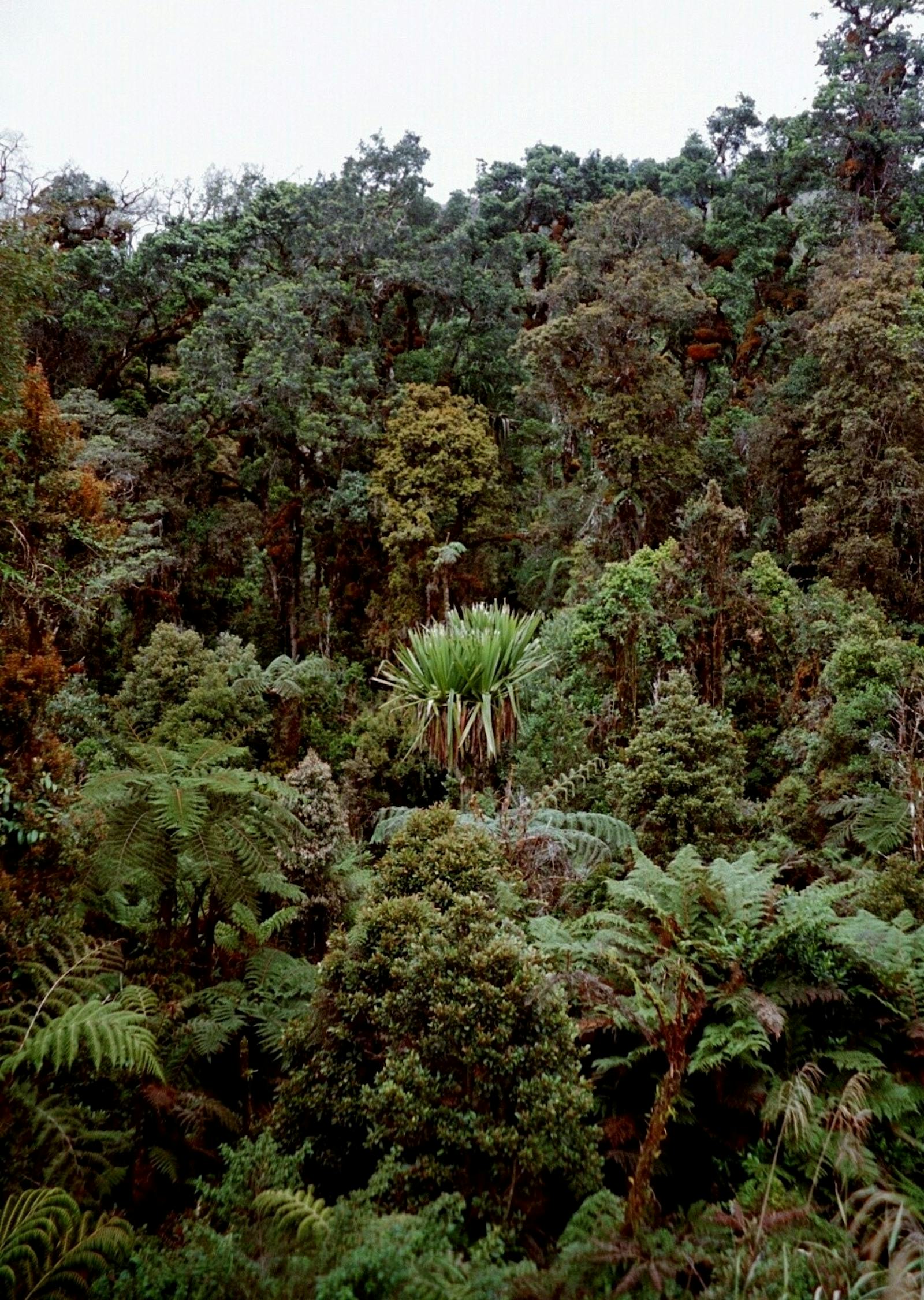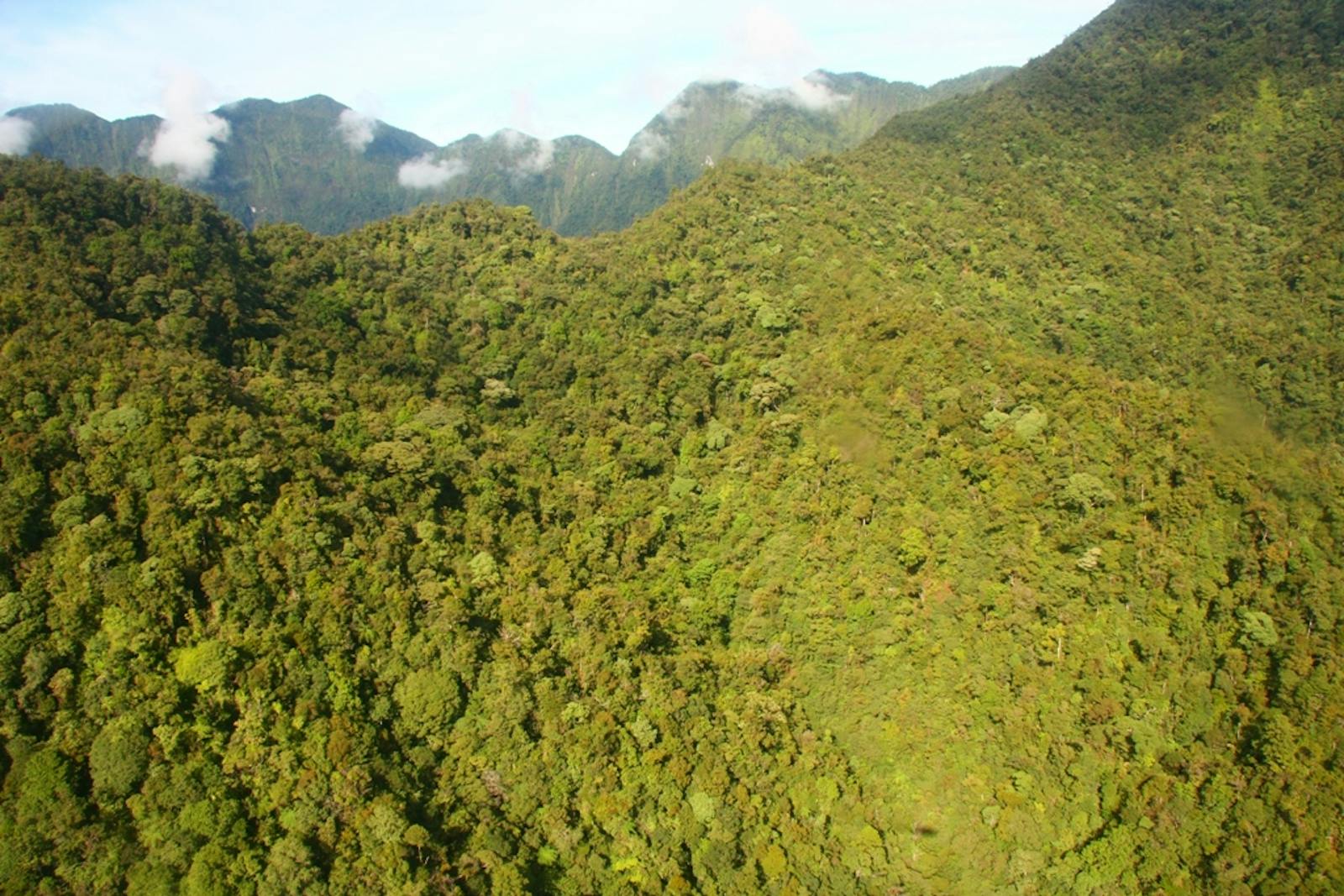Central Range Papuan Montane Rainforests
The ecoregion’s land area is provided in units of 1,000 hectares. The conservation target is the Global Safety Net (GSN1) area for the given ecoregion. The protection level indicates the percentage of the GSN goal that is currently protected on a scale of 0-10. N/A means data is not available at this time.
Bioregion: New Guinea & Surrounding Islands (AU13)
Realm: Australasia
Ecoregion Size (1000 ha):
17,237
Ecoregion ID:
139
Conservation Target:
91%
Protection Level:
2
States: Papua New Guinea, Indonesia
The Central Range Papuan Montane Rain Forests cover the mountain spine of the island of New Guinea, ranging from approximately 1,000 to 3,000 meters in the Central Cordillera of the island. These are the world’s hotspot for the spectacular Birds of Paradise. At least 15 species of these birds are entirely or largely restricted to these highland forests. The forests also support assemblages of plants and animals that are among the richest and most unique on the planet, with, for example, over 100 endemic vertebrates. Tree kangaroos, long-beaked echidnas, and dwarf cassowary are some of the larger inhabitants. The many marsupials reflect strong affinities with the Australian fauna.
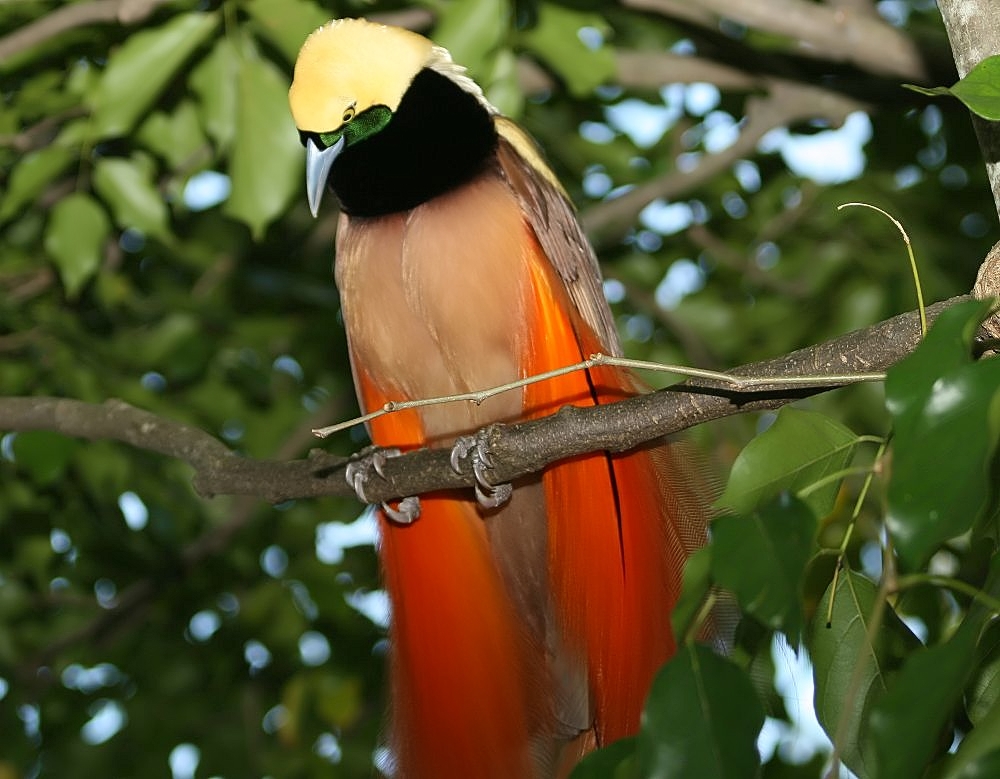
The flagship species of the Central Range Papuan Montane Rainforests ecoregion is the Raggiana bird-of-paradise. Image credit: Wikipedia, David J. Stang (CC by 4.0)
Lower montane forests occur at approximately 1,500 to 2,500 meters with oaks, such as Castanopsis acuminatissima, Elaeocarps, and laurels. Araucaria can form tall stands on ridges. Above 1,500 meters in places, Nothofagus dominates moss-covered upper montane forest. High mountain forest begins at approximately 2,500 meters and support species-poor forest of primitive conifers (Podocarpus, Dacrycarpus, Dacridium, Papuacedrus, Araucaria, and Libocedrus) and Myrtaceae. The lower forests are very dense and ever-wet.
The complex terrain and biogeography of the ecoregion have driven pronounced speciation in many groups. Subsequently, the ecoregion contains some of the highest richness of vascular plants, reptiles, and amphibians in the Indo-Pacific and some of the highest endemism for mammals, birds, and vascular plants. Ninety mammal species inhabit this ecoregion, of which an incredible forty-four are endemic or near-endemic. The forests support 348 bird species, of which 55 are endemic or near-endemic. For butterflies, the Weyland Range and the Hagen-Sepik-Wahgi Divide are both centers of endemism.
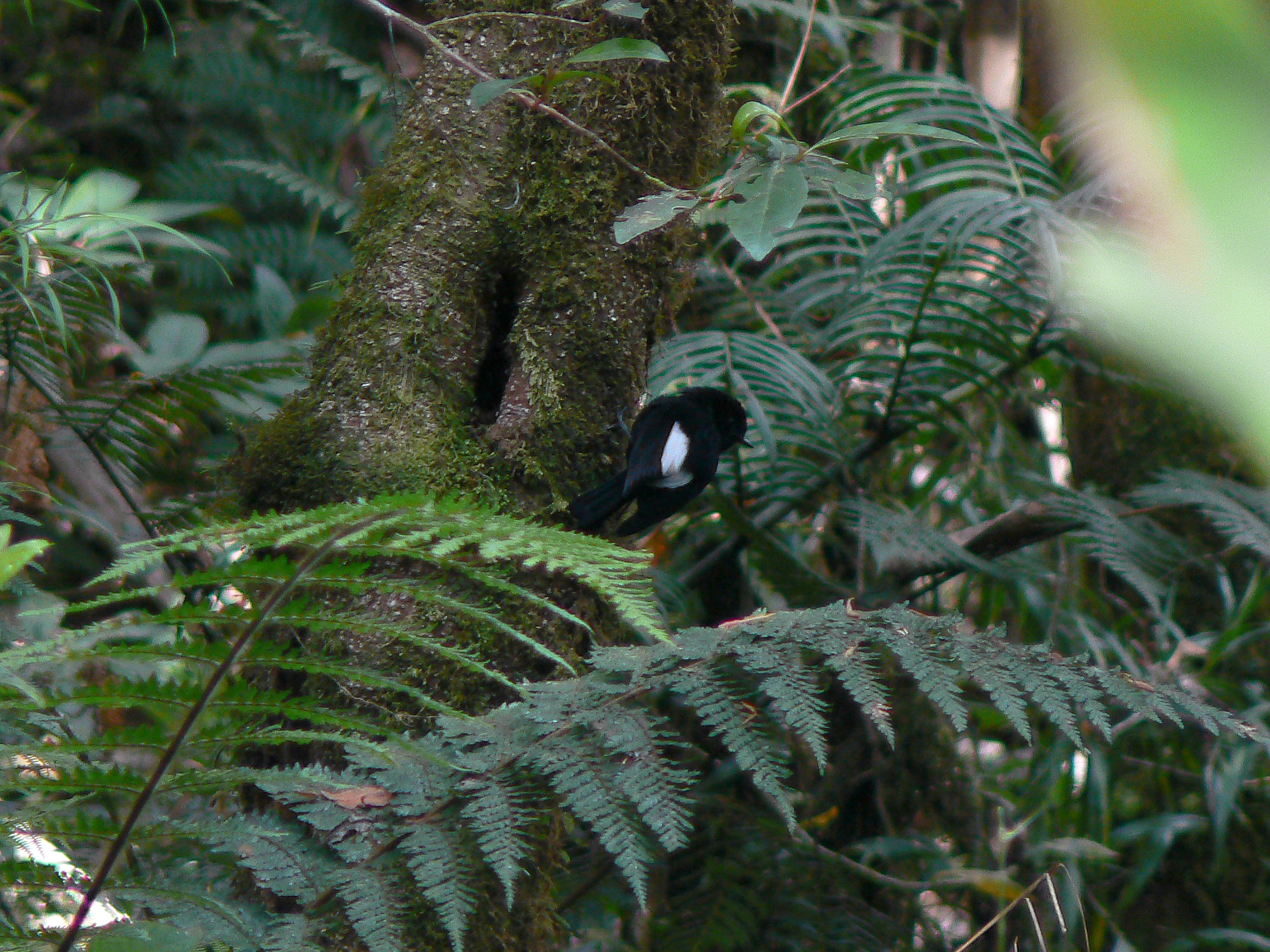
White-winged Robin. Image credit: Wikipedia, Markaharper1 (CC by 2.0 SA)
Seven Centres of Plant Diversity (CPD) are shared between this ecoregion and the adjacent Central Ranges Sub-alpine Grassland ecoregion. For example, the Star Mountains-Telefomin-Tifalmin-Strickland Gorge CPD contains very rich (more than 3,000 vascular plant species) montane and high-altitude vegetation. The Hunstein Range-Bürgers Mountain-Schatteburg, Mt. Giluwe-Tari Gap-Doma Peaks CPD contains more than 2,500 vascular plant species and extensive stands of Agathis labillardieri. Unique Dacrydium swamp forest, limestone karst forests, and volcanic ash soils contribute to unusual floral communities. Important Araucaria cunninghamii, A. hunsteinii, and Castanopsis forests are found in the Mt. Michael-Okapa-Crater Mountain CPDs.
The montane rainforests are generally undisturbed, though most highland valleys are heavily populated and deforested. The Freeport copper mine, located within the Lorentz Strict Nature Reserve in Irian Jaya, has degraded a large zone with sedimentation and toxic runoff into adjacent stream and river systems. Petroleum extraction also occurs in the Southern Highlands Province in Papua New Guinea. More than half of the Lorentz Nature Reserve is under petroleum concessions. Mining and logging operations are leading to deforestation and increased access, and human populations are contributing to increased hunting.
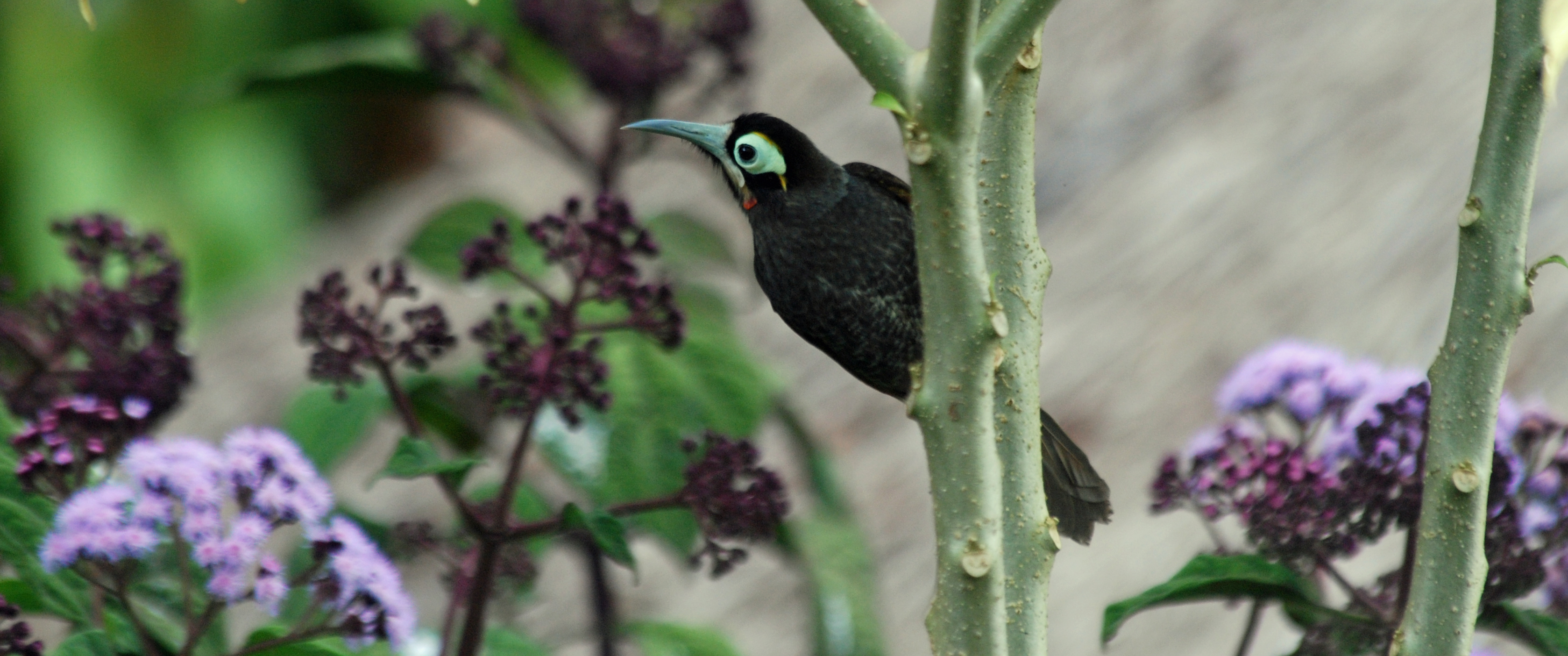
Yellow-browed melidectes. Image credit: Nigel Voaden, Creative Commons
Crater Mountain Wildlife Management Area, a protected area, has been comprised by gold mining operations. Logging concessions have been granted for large areas of the ecoregion. Fourteen percent of the ecoregion is covered by eleven protected areas. The largest protected area in the Central Ranges is the 21,500 km2 Gunung Lorentz Nature Reserve in the Snow Mountains of Irian Jaya, although only 7,350 km2 of the area is in this ecoregion.
Priority conservation actions for the next decade
- Minimize the impacts of logging, petroleum, and mining operations on native forests and biodiversity.
- Preclude exploitative activities from important areas for conservation, which will entail substantial lobbying of government and communities.
- Ensure protection for priority areas for conservation that include Mt Sisa, Tari, Mt Murray / Mt Giluwe, Mt Bosavi, Mt Gahavisuka, Crater Mountain, Mt Michael, Kuk WHS, Mt Wilhelm, Mt Eliambari, and Karamui. Lorentz NP remains a high priority in Irian Jaya despite the degradation from mining.
-
-
- Adams VM, VI Tulloch, HP Possingham. 2017. Land-sea conservation assessment for Papua New Guinea. A report on the work undertaken to fulfil the terms of the project Review and Integration of the Terrestrial and Marine Program of Works on Protected Areas. PNG CEPA, University of Queensland, Global Environment Facility, UNDP, Brisbane. 75 pp.
- Beehler BM, TK Pratt. 2016. Birds of New Guinea Distribution, Taxonomy, and Systematics. Princeton University Press, Princeton.
- Davis SD, VH Heywood, AC Hamilton (eds). 1994-1997. Centres of plant diversity: a guide and strategy for their conservation. World Wide Fund for Nature (WWF) and ICUN - World Conservation Union, Cambridge.
-
Cite this page: Central Range Papuan Montane Rainforests. Ecoregion Snapshots: Descriptive Abstracts of the Terrestrial Ecoregions of the World, 2021. Developed by One Earth and RESOLVE. https://www.oneearth.org/ecoregions/central-range-papuan-montane-rainforests/
-
